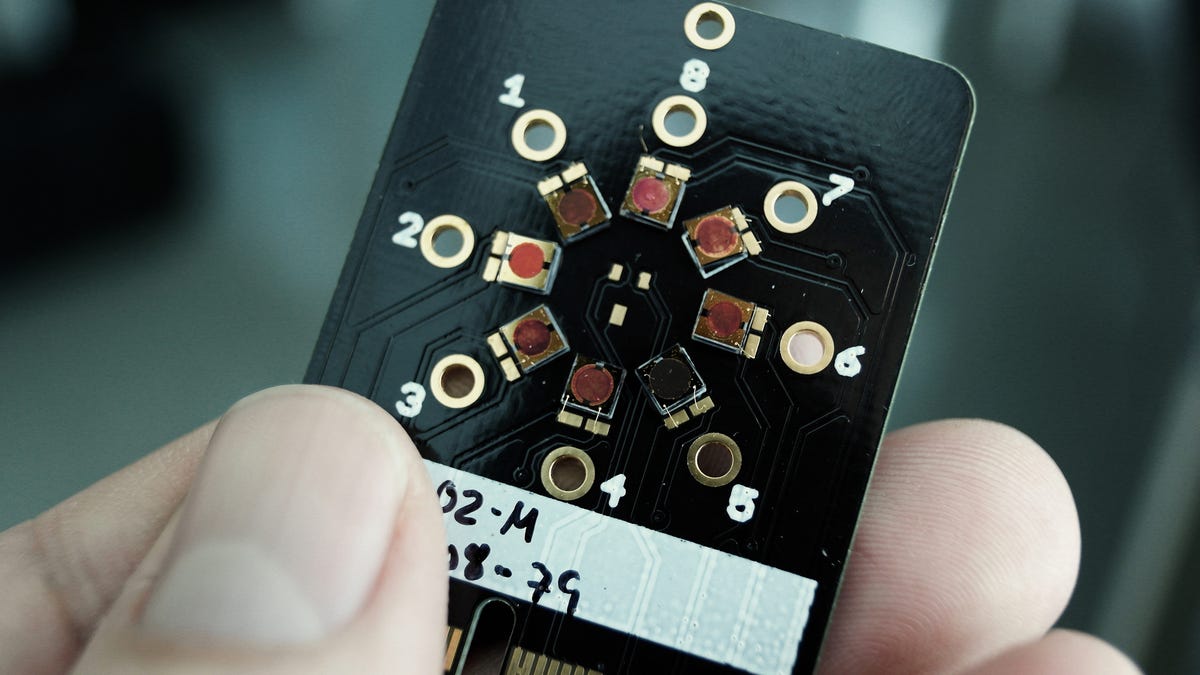Your next car could detect explosives
Gentex's nanofiber sensing technology could turn future vehicles into roadgoing bomb sniffers.
What if there were a relatively simple and affordable device that could accurately detect dozens of chemicals, from explosives to industrial toxins to volatile organic compounds? Well, there is: Gentex's innovative nanofiber sensing technology can perform such a magic trick. It's one of the many items this automotive supplier is showcasing at CES 2022 in Las Vegas this week, and it's probably something you're going to want in your next car.
So, how is this tech able to decipher hexane vapors from hydrogen cyanide, tell the difference between acetone and ammonium nitrate? At a high level, it's fairly simple, as Neil Boehm, chief technology officer and vice president of engineering at Gentex explained to Roadshow. Basically, the sensor consists of a piece of glass with inter-digitized electrodes to which nanofibers are attached, fibers that are about a thousand times smaller than a human hair. When a chemical is detected, Boehm said, you get a signal across the electrodes, "like nano-amp currents." Those tiny electrical impulses then get sent through an amplifier and onward to a microprocessor, which crunches the numbers and determines the signature of the substance being detected. Pretty clever stuff.
"This technology came out of the University of Utah," said Boehm, where they were doing a lot of grant work to figure out how to identify chemical warfare agents and explosives. Gentex acquired this when it bought startup Vaporsens in 2020.
Nanofibers are about a thousand times smaller than a human hair.
"The fibers are developed so you can sense multiple gases," said Boehm. And with various sensors in an array, you can hone in on specific chemicals. This system can even sniff out certain substances down to the part-per-billion level, "which is extremely, extremely sensitive."
Like an air filter, over time those nanofibers do get loaded up with gunk. "In general, the fibers … would need to be replaced at an interval," said Boehm, but how long this is depends on the substances being detected and the exposure level. They are working on a way of cleaning the fibers using high heat to extend the product's life, but this is still under development.
The good news is, when replacement becomes necessary, it shouldn't cost an arm, a leg and your firstborn child. According to Boehm, "The actual nanofibers themselves are … relatively inexpensive," and the manufacturing process is straightforward.
When it comes to automotive applications for nanofiber sensing, the obvious one is air-quality monitoring, but this technology goes far beyond automatically putting your vehicle's HVAC system in recirculation mode when you're driving behind a stinky diesel truck. Boehm said this system could be used to sniff out explosives to determine, for instance, whether a suspicious-looking package left in the back of an autonomous taxi contains a bomb or not.
Gentex says the cost of this technology should not be prohibitive.
Nanofiber sensing technology isn't quite ready for primetime, as engineers are still refining it, but Boehm estimates it will be available soon. He said some first applications will likely be within three years, "And I would say automotive is probably going [to be] … in the four-year window." When it does hit the market, it's designed to be scalable across all kinds of vehicles. Gentex doesn't want this to come out just in a Mercedes-Benz S-Class or Rolls-Royces. The goal is to make it affordable enough for mass-market automakers to deploy, so maybe you'll be able to get this tech in your next Toyota RAV4 or Ford F-150.


